When it comes to dev-focused examples, you’ve probably seen enough of Stripe and Twilio. That’s one reason I like to share Plaid, the company best known for seamlessly connecting to bank accounts.
But the best reason to dive deep into the developer experience of this financial services API: Plaid’s homepage and docs get a lot right. While the company’s messaging isn’t particularly developer-focused, when Plaid does reference developers on the homepage and in docs, it’s worth emulating.
Let’s connect with Plaid’s homepage and docs to see what insights we find, like “For developers” text, code snippets, and language-specific use cases.
Plaid’s Homepage Is Subtly Dev-Focused
Plaid was one of the first 30 technical companies we reviewed in our best practices research and analysis. That list was chosen by frequent mentions of its great developer experience. But what’s interesting is its homepage has to thread the needle to multiple audiences.
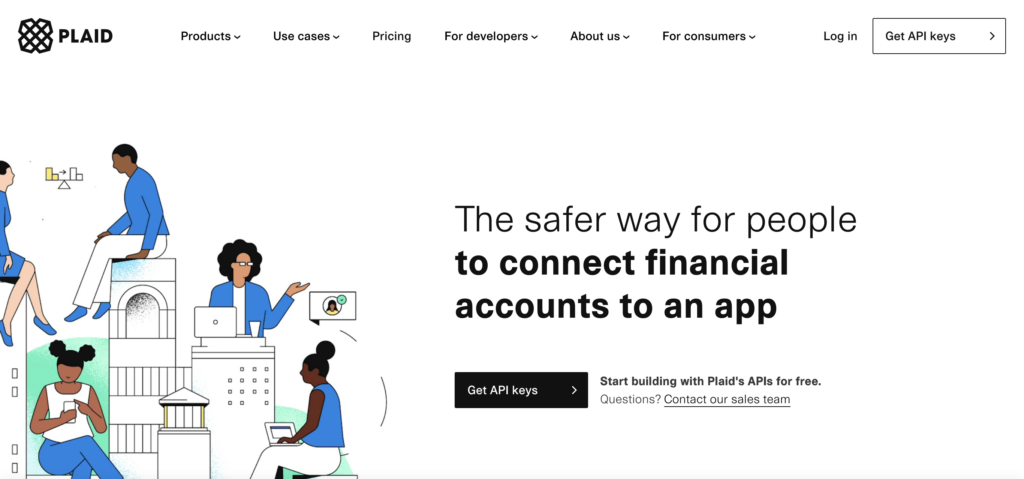
The first thing you might notice is that this isn’t a particularly developer-focused message:
The safer way for people to connect financial accounts to an app
“App” may be a developer thing, but I think the reason for this message has more to do with their “For consumers” navigation item. For example, these consumers would be at a bank that connects to this Plaid thing and they’re wondering what the heck it is. So Plaid has to thread the needle there, knowing that they actually have this huge audience looking at them that will never be a customer, but still needs to understand what they do.
Many companies would completely give up on a developer message on the homepage, opting instead to hide it away in documentation.
But Plaid makes it really clear with the “Get API keys” and “Start building with Plaid’s APIs.” These sorts of messages remind the developer that they’re in the right place. Of course, it helps that they also have a “For developers” menu within its global navigation.
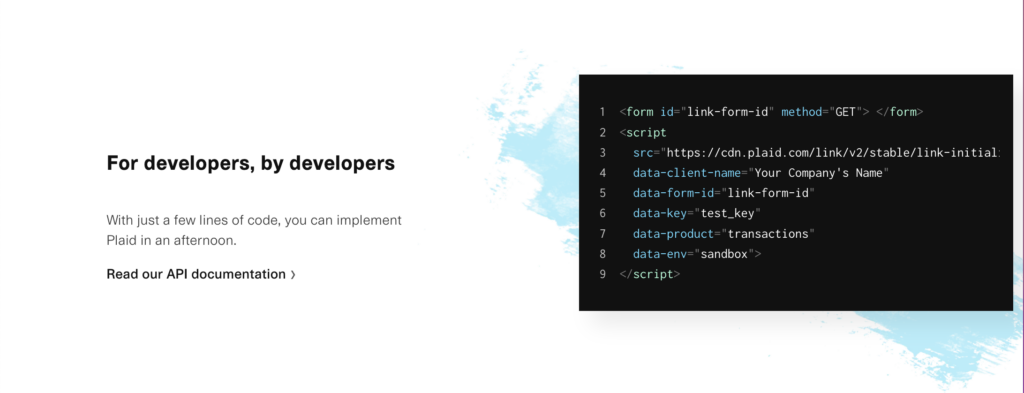
Lower down on their homepage, they have this block that looks like code and is technically HTML. A little script tag shows how easy it can be to integrate. This does seem like more of an opportunity to even have some code within there. If they’re going to have something that looks code-like on the homepage, they could do more. However, they do offer the option to pull you right into their API docs right next to this code block, which is good.

Further down, they hammer home these areas where you might build and actually pull you deeper in with a “Learn more.”
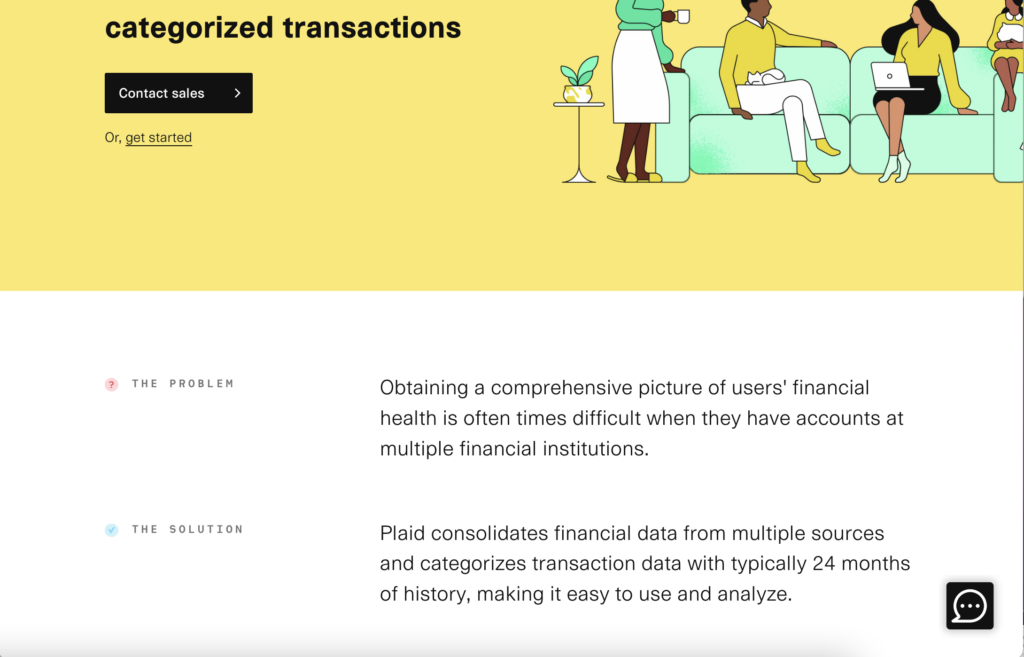
Clicking that under “Personal finances,” I’m not a big fan of “Contact sales,” but it does go on to talk about the problem and show what they have for a solution.
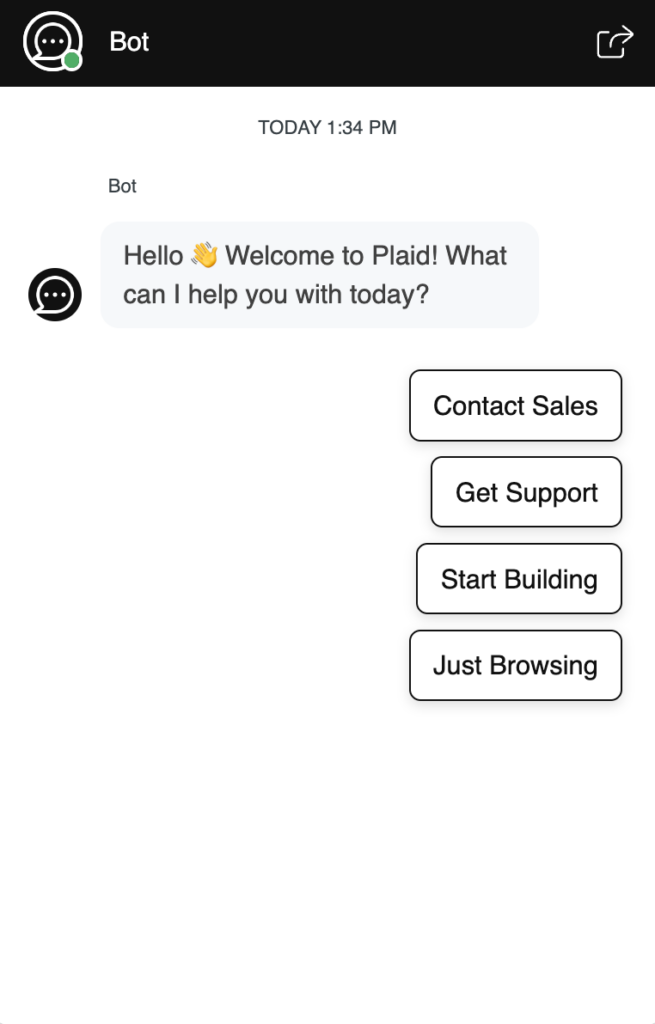
And of course, this little message. Look at that “Just Browsing”… go away. That’s nice. But isn’t it also nice that they have one that’s about “Start Building?” So as a dev, I know what I need to get ready and it’s probably not to contact sales.
Use Cases Are Front and Center in Plaid’s Docs
Let’s explore Plaid’s other navigation items a little bit more. One of the things I really like is how they put “Use cases” front and center.

Now, as with the main homepage message, these aren’t particularly developer-focused. But you still get a good idea of what you can build with Plaid, and which areas you can build within.
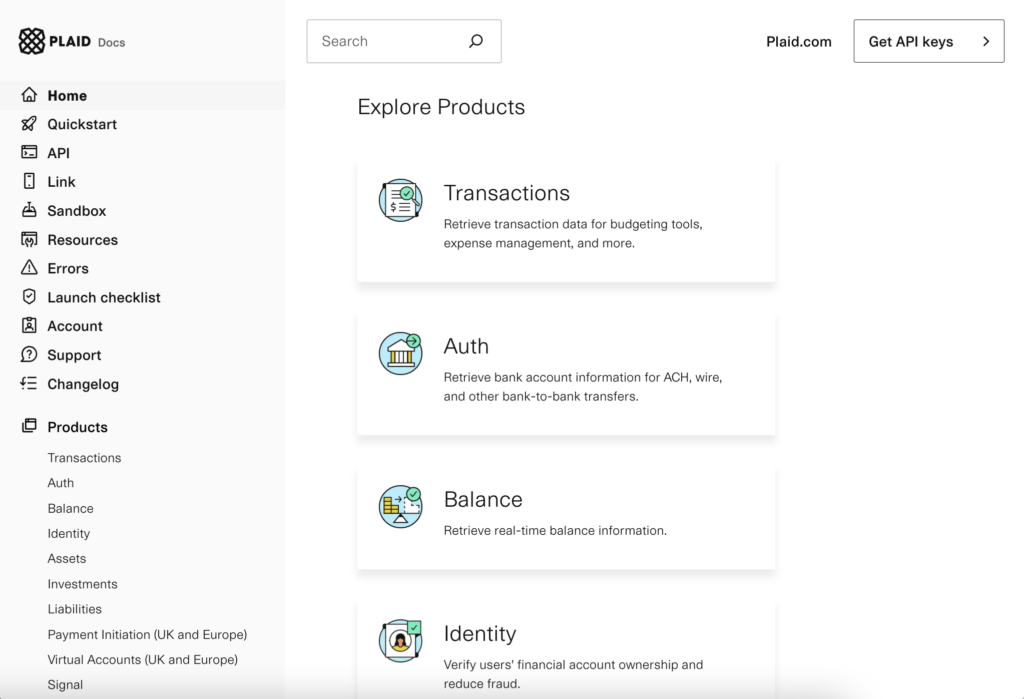
They actually have a really great version of this inside their docs as well. They call these “Products,” which I don’t necessarily like, but they do talk about how you can actually use Plaid, i.e. to “Retrieve bank account information.”
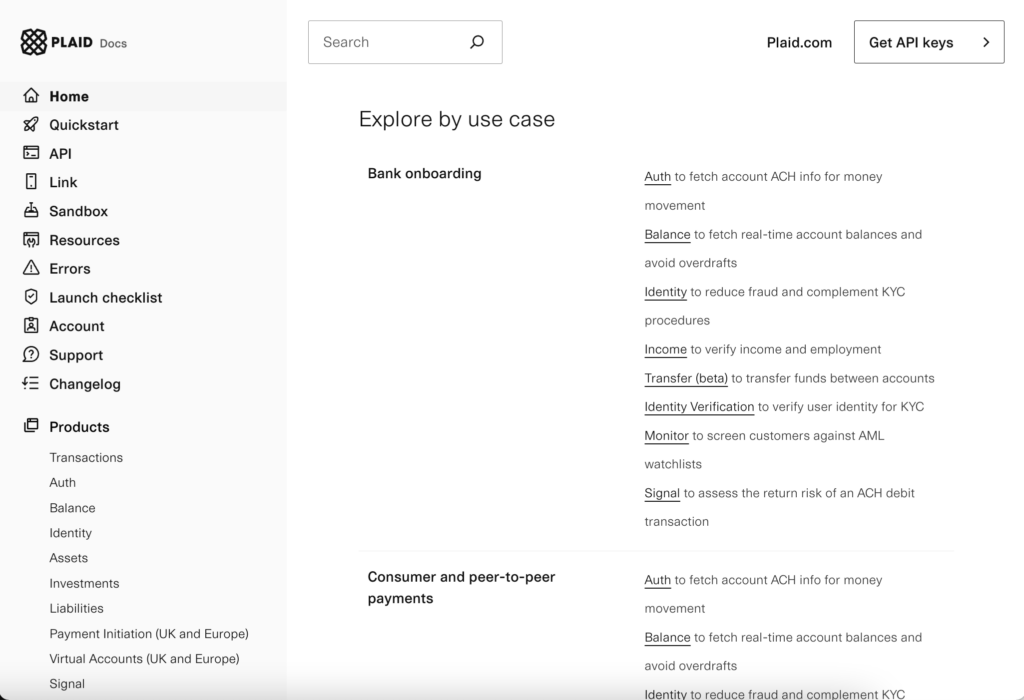
Then they actually go in and truly pull out use cases. They connect them back to those “Products,” i.e. “Auth to the fetch account.” They organize all of these use cases within industry segments and make the problems that they solve super clear as opposed to your standard “here’s what this API does,” which I really love about Plaid.
Even Better Are Language-Specific Examples
As we’ve shown, Plaid has no shortage of use cases. But they take their docs to the next level by making them language-specific.

There are five official libraries built by the Plaid team. These SDKs are generated from an OpenAPI document, which presumably means they are kept updated along with the API.
Support for multiple languages is increasingly expected. When we dug into the documentation of great developer companies, we found the vast majority are at or near Plaid’s level: 73% of the top companies we reviewed support 4+ programming languages with official libraries.
Again, Plaid takes it one step better. You can view the Plaid API reference within a language context:
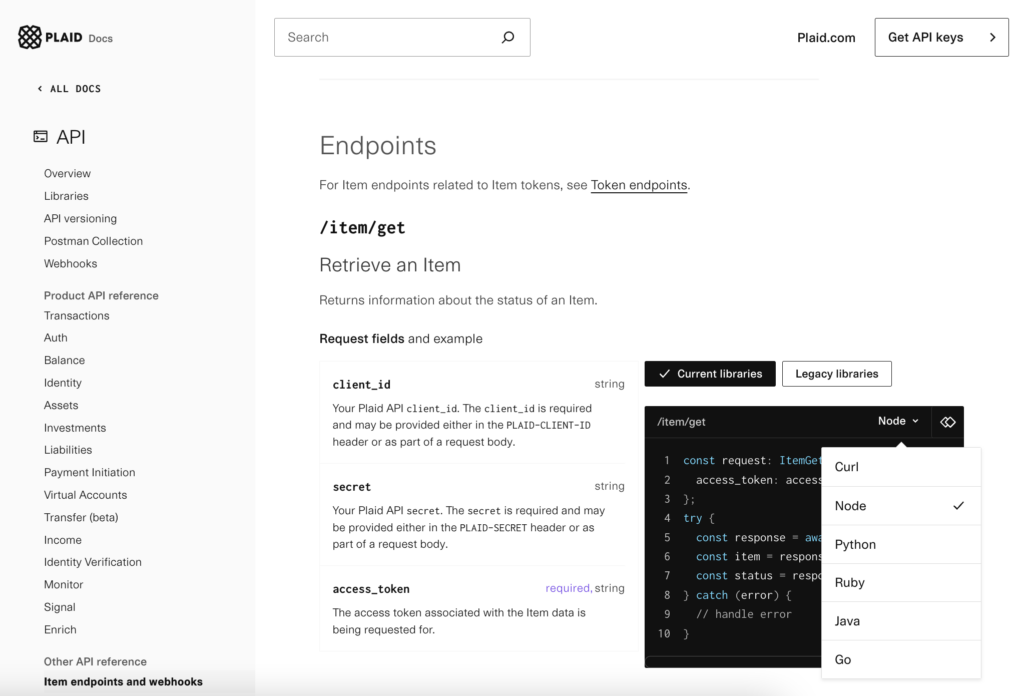
This very Stripe-esque ability allows users to pull in code examples in the language that they want so that they can quickly copy-paste and get something going in their own app.
Don’t worry, if you prefer raw API calls, you can copy-paste cUrl commands to your command line.
Though it feels like this language focus should be commonplace, it’s rarely seen this integrated. When I talk about companies with great developer experience, I’ve elevated Plaid to be alongside Stripe and Twilio. In some of the things it does, like these language examples, it may be the best of the three.
Whether it’s a crafty needle-threading homepage, championing use cases, or supporting languages, there’s a lot we can learn from Plaid. It’s only one of the 30 companies where we’ve shared our research, which is just a slice of the 700+ we’re tracking overall. Dig into the rest in the Developer Company Examples Gallery.
Plaid Knows Its Audience, Do You?
Plaid’s homepage and docs are so good, they deserved their own blog post.
But they’re only worthy of our admiration and emulation because Plaid understands its technical audience.
Can we help you better understand yours? Let’s chat and help you reach more of the right developers.
